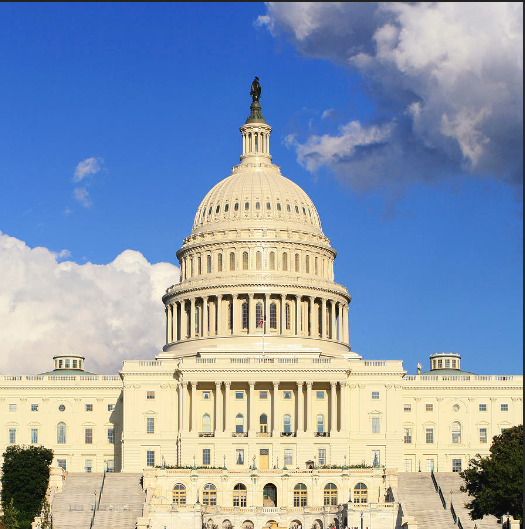Remote Service Delivery Options Rise to the Occasion for Career Seekers Transitioning into Reemployment

Hallie Leverich-Purvis, Sr. Marketing & Communications Team Lead, Geographic Solutions Evan Brenner, Digital Content Specialist, Geographic Solutions.
The pandemic radically altered business practices all over the world. As a result, workforce development agencies across the country and beyond have been moved to explore creative solutions that allow staff, job seekers, and employers to connect, interact virtually, and conduct business remotely – all while remaining at a safe social distance.
During the pandemic, agencies faced a crushing amount of traffic to their labor exchange and unemployment insurance systems. Contributing to the crushing weight was a nationwide shortage of staff due to sickness, burnout, and social distancing guidelines. Virtual live chat platforms became instrumental in serving large volumes of individuals, filtering them in an organized fashion through a queue, and directing the individual to the appropriate staff member who would be able to serve their needs.
Live Chat Emerges as Key Remote Service Delivery Avenue
The North Carolina Department of Commerce’s Division of Workforce Solutions (NC DWS) had great success serving individuals via their live chat platform. The first hurdle that the state faced was providing agency staff members with remote tools that they could use to deliver services at a distance. For a time, like many organizations, NCWorks Career Centers (the state’s American Job Centers) were not serving any customers in person.
In Geographic Solutions’ February 2021 Pathways to Employment webinar, the NC DWS Information Technology Director, Michael Hoskins, described how his organization pivoted at the height of the pandemic to provide remote services.
“(Our live chat was) set up so that when an individual logs into NCWorks, they will see in the bottom right-hand corner a ‘live chat’ option,” said Hoskins. “When they click on ‘live chat,’ they will then be directed to one of the assigned staff that are logged in.”
While a live chat setup can seem rather standard, models differ from state-to-state based on the need, environment, and staff resources.
“In North Carolina, we may have 100 or more people logged in at any one time,” said Hoskins. “The way it would work is when somebody would chat, it would send it to the next available person on that list.”
But, as Hoskins described during the webinar event, they needed to make some unique changes to the live chat model to make it work for North Carolina’s unique brand of service delivery and case management.
“We submitted a request to make some changes,” said Hoskins. “Now, if an individual goes to chat, the first person they connect them to is their case manager.”
Making these changes helped Hoskins and his team at DWS assign case managers in the system remotely in their Trade or Title I applications. It allowed the individual to reach out directly, and at a distance, to their case manager.
But what happens if a case manager isn’t logged on? The system was set up to look for somebody else in the same office as the case manager.
“It was a quick way that we could get people to connect to the staff that were working remotely,” said Hoskins.
Remote Job Fairs: An Opportunity for Relevance and Distanced Service Delivery
Virtual job fairs emerged as one of the more creative, remote, and versatile – avenues that American Job Centers were able to make use of in their effort to maintain high service delivery outcomes, and expanded hiring radii, while safeguarding everyone’s health.
As companies explored non-traditional hiring methods, these virtual platforms rose to the challenge as successful ways to bring hiring fairs directly to the applicant, breaking down geographic boundaries, and appealing to a much broader talent pool who were willing and able to work anywhere. Virtual job fairs were also utilized to target certain demographics, professions, and industries who were conducting small to large hiring campaigns.
At the height of the pandemic, Recruitics, a data-powered recruitment marketing platform, conducted research on virtual job fairs. Their results showed that 45 percent of employers turned to virtual hiring events. And the Society for Human Resource Management, or SHRM, found similar results while surveying industry professionals. Their May 2020 article highlighted the increase of technology use for hiring events as a result of the pandemic’s onset.
Upskilling in a Virtual World
In areas where workforce agency staff were able to extend their hiring arm with virtual job fairs, a new challenge emerged – upskilling or reskilling, and coaching individuals in interview etiquette. Mass layoffs due to COVID caused unprecedented restructuring on where and how individuals could find employment. Some recently unemployed had to readjust their approach and explore careers and employment that they sometimes had no prior experience in, thus bringing in the need for online learning platforms offering courses for in-demand occupations.
These virtual tools allowed individuals to gain the skills they needed to close their skills gaps, explore career pathways, connect with employers remotely, to gain confidence and better prepare themselves to succeed in a sometimes-over-saturated job market as the nation slowly returned to work.
Paper and Pen Get a Digital Makeover
The NC DWS was able to integrate remote digital signatures into some of their applications – specifically Title I, Wagner-Peyser, and Trade applications. This provided a very simple and efficient way for both staff and individuals to sign forms remotely, and a way for staff to send a message to an individual located at home. The individual would get a text message, an email, or an alert message notifying them that there was a document that needed their signature.
They would view the document and quickly provide a signature across a number of mediums (signature by mouse, audio voice or other audible signature methods, as well as by PIN code. Once entered, the signature is applied and stored digitally.
In our February Pathways to Employment webinar series on remote service delivery, Hoskins, the IT Director in North Carolina shared that his agency staff members were able to eliminate multiple platforms. And adding features that allowed signing documents remotely simplified the process and reduced their overall operating cost.
“(Adding) made it a secure way that we can get information,” said Hoskins. “And, the nice thing (is), if an individual is on their telephone, they get a text message, they can view and sign the application right on the telephone,” said Hoskins. “So, it makes it very simple for the individual.”
Virtual Service Delivery: The Boost We All Need for Reemployment
Whether these tools become core service delivery solutions or a way to complement in-person services, there is no doubt remote service options offer flexibility to serve populations in hard-to-reach regions. By employing virtual service delivery tools, American Job Centers are able to expand their reach and effectiveness when offering assistance to individuals seeking reemployment.


National Association of Workforce Boards | All Rights Reserved |
Created by Olive + Ash.
Managed by Olive Street Design.









